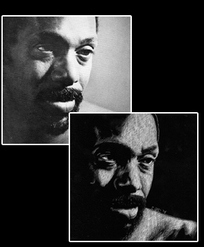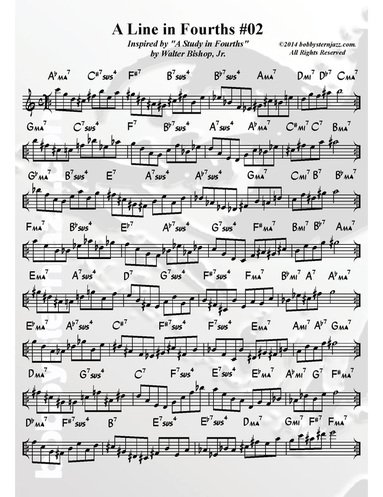
The link to Part 1 should open in a separate tab, so you can have them side by side for easy access.
The 4 bar line presented here is based on the first bar of ex. 8 on p. 13 of "A Study in Fourths" (a 2 bar phrase), of which both first measures are identical.
So we know where the line will end up, but what about the road traveled to get there? Probably the most logical first choice would be some type of dominant V7, resolving to C. Playing the first three and a half bars over over a G pedal would work fine, but then I wouldn't have anything else to write about.
So, what else?
Cycling the Cycle of 5ths backwards from "C", two chords per measure (except for bar 4), would land us on some type of Ab at the first beat of bar 1.
Look familiar?
If not, then look again!
It's none other than our old buddy, "Rhythm Changes 'A Section' Cycle Sub". Hell-oh!
The changes are almost identical, except for a pair of tritone subs. This wasn't my intention when I wrote out the line, but I'm surprised and delighted in the discovery; and that it works. The chord "qualities" really don't seem to matter much, either (Maj., min., Dominant, or Sus).
Funny what lays around in your subconscious.
Notice that the final two 4 note groupings of eighth notes form a diminished scale in P4ths, a min. 3rd apart.
This, of course, is not only one of a countless number of ways one could harmonize this line, but just one of the zillion lines one could create using techniques from "A Study in Fourths".
Thank you, Mr. Bishop!

 RSS Feed
RSS Feed









